Do you experience belly button bleeding? Here, you will be able to learn the causes of the sore, itchy and infection discharge form the belly button as well as the cleaning and treatment of the button.
When a navel is bleeds, then the condition should be taken seriously as something is not right definitely.
Belly Button Bleeding
Belly button bleeding has several causes, but the most common is the infection and fungal growth or as a result of injury, all this notwithstanding, this infection has an impact to a person’s health if they are treated early.
Your doctor will critically do tests on you to determine the cause of bleeding of the navel
Causes of belly button bleeding
- Infection of the umbilicus is the most common cause of the bleeding as the environment favors the growth of the bacteria due to its moisture and warmth. The infection can be able to be detected early, once you discover that the part of the umbilicus has become swollen or maybe colored, then expect the next stage of odorous discharge followed by bleeding, the amount of bleeding can vary. Any bleeding, however is enough to make you see a doctor.
Treatment depends on infection type as well as the extent of the fungal growth. Oral prescription may be described or medicated topicals.
- Growing cyst is rare cause of belly button bleeding form the presence of a cyst, the cyst is a urachal remnant implying that it was a connection from the umbilicus to the abdominal wall when we were in the womb, but at times it fails to close over as we grow outside womb and may result to occasional bleeding. This is a more normative cause of bleeding that still results to serious infections.
- Injury to the belly button area due to trauma that causes the wound in the belly button which may at times not be immediately noticed. The wound may not always be a serious one but a small bruising in the area. This happens mostly to people who have undergone abdominal surgery, recently gave birth or even those who were involved in accidents and the impact was directed to the abdominal area.
- Surgical procedure will cause abdominal bleeding, especially those who used the area as entrance for laparoscopic surgical tools
Sore Belly Button or Pain
A hernia (or “rupture”) is a weakness or defect in the wall of the abdomen. This weakness may be present at birth. Or, it can be caused by the wear and tear of daily living. Although men are more likely to have hernias, they also occur in women and children.
A weakness or break in the abdominal wall allows the contents of the abdomen to push outward. This often causes a bulge under the skin. It can also cause discomfort or pain. Your symptoms depend on the size and location of your hernia. Common symptoms include:
- A bulge in the groin, abdomen, thigh, or genitals. The bulge may get bigger when you stand and go away when you lie down.
- Discomfort or pain that is worse at the end of the day or after standing for long periods.
- Pain during lifting, coughing, sneezing, or physical activities.
- A feeling of weakness or pressure in the groin.
- Discomfort or pain during urination or bowel movements
Belly Button Bleeding and Pain
Pain around the belly button
In adults, the pains that occurs around the belly button are most likely due to hernia which is a protrusion of the small intestine that occurs between the muscles in the belly button. The risk factors for the pain around the belly button include pregnancy, persistent coughing, and abdominal surgery, accumulation of the fluid in the abdomen, obesity or kidney disease.
The symptoms are usually red bulge of the skin color of a few inches mostly near the belly button, coughing, belly button bleeding, pain or burning feeling, straining due to discomfort and pressure. Treatment is through surgical repair of the muscles that are near the belly button. However, the disease is rare on infants but very painful.
Pregnancy is another cause for the pain around the belly button where the pain is caused by, umbilical hernia or the pressure of the fetus upon the belly button especially in late pregnancy.
Appendicitis is the pain that is associated with inflammation of the appendix which is usually acute. The symptoms are anorexia, nausea, constipation and low grade fever after the pain. A person might also experience a vague pain in the belly button area for several hours that is aggravated by coughing and even belly button bleeding
The signs include the tenderness in the lower right quadrant, applying some pressure on the left lower abdomen and quickly releasing triggers pain in the lower right abdomen.
The recommended treatment is through surgical removal of the appendix
Psoriasis is a chronic inflammation of the skin where silvery white and itchy or burning patches with painful cracks around the belly button elbows, scalp, back, hands or knees but the painful cracks are concentrated around the belly button creating belly button bleeding. Treatment of psoriasis include topical and even oral anti-psoriatic medications.
Pains above the belly button
This can be caused by acute gastritis which is a stomach infection where a person experiences loss of appetite, burning pain and also burping.
Gastric ulcer which is the gnawing pain that can be relieved or even aggravated by eating, heartburn or when someone is bleeding, then a black stool is seen.
Duodenal ulcer that happens especially when there is deep pain that is relieved by eating and can lead to belly button bleeding
Acute pancreatitis here, a severe and constant upper abdominal pain is felt that can last for several hours before it disappears and can be worse after eating. You can also experience nausea and fever.
Pains under (behind) and below the belly button
- This can be due bladder problems
Bladder infection where about 5 inches below the belly button can be infected with a person experiencing frequent urination, smelly urine, cloudy urine and low grade fever resulting in belly button bleeding
Interstitial cystitis is where a person feels frequent urination mainly the women and the pain is usually relieved by emptying the bladder
Bladder cancer where there is pain in the bladder and blood is occasionally seen in the urine
- Irritable bowel syndrome
This pain is located below the belly button but is able to appear in any other part of the abdomen that is accompanied by other symptoms that include bloating, constipation especially shortly after meals and loose stools
- Urachus with pulling pain
This happens to some people especially the young, where they describe a sharp pain in the belly button that moves down to the bladder, penis, clitoris, urethra or the groin area and they tend to stand up quickly, empty the bladder and pull the belly button towards the upper direction. The pain is said to originate from the urachus that is a remnant of the duct connecting the bladder and umbilicus in fetus, but the urechus can surgically be removed
Pain on the right side or left side of the belly button
- Shingles that constitutes a burning and crusty rash that move along the spinal nerve around the trunk towards the belly button leading to belly button bleeding.
- Urinary stoves are a sudden, severe pain on the left or right side of the abdomen that can radiate the groin and burning urination is felt
- Bulging or herniated discs are associated with a pinched spinal nerves that cause pain on the left side or right side of the belly button.
Belly button pain in children
- This can be caused by urinary tract infection in the children that is accompanied with pain around the belly button and the child may experience frequent urination and the urine will be smelly.
- Umbilical granuloma and polyp; a granuloma is a crumby lesion in children that is pink in color and less than 1 cm in length that can develop after the umbilical cord has been separated.
A polyp is congenital lesion that appears up to 4 cm, that is red in color and experience occasional discharge in the belly button
- Omphalitis is a bacterial infection of the newborns umbilical stump with prulent discharge.
Belly Button Discharge
Sometimes, there can be a smelly discharge that emanates from the belly button, it is caused by several things including the below;
Fungal infection of the belly button; this is caused by the yeast candida, whose risk factors include; regular touching of the button, poor hygiene, very moist skin and obesity.
The symptoms that are associated with the fungal infection is where a person experiences a red, smelly or itchy , tender and painful button that is surrounded by flaky skin that is pus filled making it easier for belly button bleeding. And blisters can also be observed as well as occasional bleeding.
The bacterial infection is caused primarily by staphylococcus aureus or streptococcus pyogenes bacteria whose risk factors include poor hygiene, rubbing, piercing, obesity, sebaceous cyst or steroids, even a wound after surgery or laparoscopy can cause the bacterial infection.
The symptoms that are associated with bacterial infection include folliculitis where a person may feel a red itchy bumps that are filled with pus, cellulitis where a thick and tender warm skin around the umbilicus and maybe some fever. A person can also experience a soft lump that occasionally drains pus, treatment of bacterial infection includes the use of oral antibiotics and antibiotic creams.
Urachal cyst; this develops from the urachus- which is a remnant of the duct within the umbilicus through which the fetus drains urine from the bladder. At rare cases, this duct will remain open in children and young adults continuing to drain urine through the duct and thus becomes infected.
The symptoms that are associated with urachal cyst are; the pain that affects the area between the belly button and the pubic area, belly button bleeding, an open fistula with clear and even thick discharge can develop from the belly button.
The recommended treatment for urachal cyst include the use of antibiotics and even drainage or removal of the cyst from the body.
Itchy Belly Button
A pilonidal sinus which is an abnormal tissue that usually develops due to a reaction of the growing hair can develop causing a person to feel itching the affected area. It mostly appears above the sacrum and near the belly button. It has various symptoms that include a painful lump with hair and redness of the belly button and thus leaking pus from the umbilicus.
The recommended treatment include the use of antibiotics and drainage or surgical removal of the sinus
Endometriosis where the endometrial tissue that is outside the uterus presents itself as a painful nodule in the belly button that bleeds more especially during menstruation
The recommended treatment includes the surgical excision of the nodule
Belly Button Infection
Immediately after birth, the umbilical cord is cut. A clamp is placed near the cut end to prevent bleeding. The doctor examines the umbilical cord and placenta to make sure they are normal.
Within a few days, the stump begins to dry out and becomes darker.
For the first few weeks, simple care is needed to keep the cord stump dry and clean. You should sponge-bathe your baby during this time rather than bathing him or her in a tub.
The cord stump gradually becomes dry and black. It should fall off on its own around this time. The area around your baby’s new belly button will be a little red at first but should soon look like normal skin
Problems related to the umbilical cord stump are possible but uncommon:
- Infection where Infection of the cord stump (called “omphalitis”) is the most serious problem. Although a little moisture and foul odor can be normal, draining fluid and redness of the skin around the stump may mean infection is present. If drainage and redness are present, see your doctor right away. (Just fluid, without redness, is most common with granuloma—not a serious problem.)
- There should be little belly button bleeding from the cord stump. Bleeding is most likely to occur if the cord is pulled off too early.
- If the skin around the cord stump is slow to heal, umbilical granuloma may be present. The granuloma looks like a small, round growth. There is usually some wetness in the belly button. Umbilical granuloma is a relatively common problem that is not serious. Simple treatment may be needed, most commonly the use of silver nitrate to speed healing.
- Prolonged separation. This occurs when the umbilical cord stump takes longer than 3 to 4 weeks to fall off. It is usually not a serious problem.
- Umbilical hernia. Part of the intestines may stick out through the belly button after the cord stump falls off.
- You may notice a swollen area that gets larger when your baby coughs or cries. Usually, the swelling is easily pushed back into place. Treatment is usually not needed unless the hernia is very large or doesn’t go away on its own.
- Embryologic abnormalities. These are problems occurring when the baby was forming in the mother’s womb. They may include cysts or connections between the umbilicus (belly button) and the urinary system or intestines. Surgery may be needed to repair the abnormality.


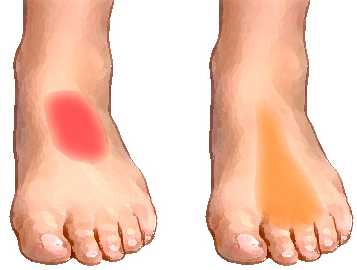
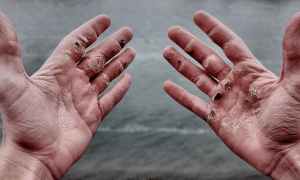

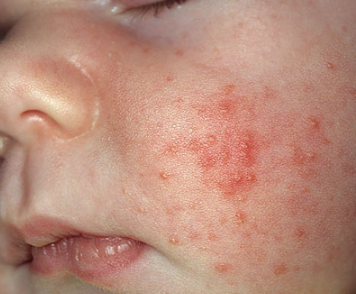










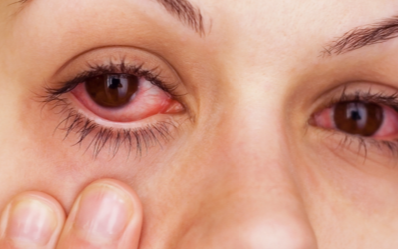

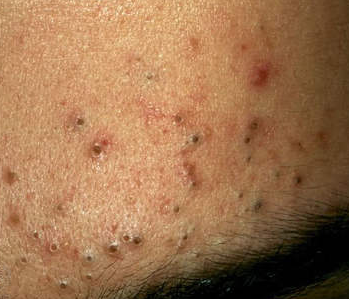
A
November 5, 2016 at 12:06 pm
Hi. I had a bleeding and smelly belly button. Best home remedy that helped me was apple cider viniger. Dip a cotton bud in apple cider viniger and apply inside your belly button. It works immediately.